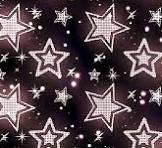Even nowadays, as an impressively well-known and powerful European country, Italy has yet, I think, to grow even stronger over the years. By the year 2050, I believe a simple fashion show will be considered too bland, and all the models I know will already be retired—at least according to my incredibly self-assured guesses. So, let’s talk about the aurora lights instead!
Aurora lights are a natural display of colorful light in the Earth’s sky, usually seen at night in the Arctic and Antarctic. They showcase brilliant patterns of bright and enormous lights, appearing as rays, curtains, spirals, or randomized dynamic formations covering the sky. Auroras result from disturbances in Earth’s magnetosphere—the region where the dominant field is Earth’s magnetic field rather than the interplanetary magnetic space—caused by the solar wind (a stream of charged particles released from the Sun’s outer layer, the corona). Most disturbances result in enhanced solar wind speeds due to coronal holes (regions of the Sun’s corona that emit low levels of ultraviolet and X-ray radiation) and coronal mass ejections (a significant ejection of plasma from the Sun’s corona into the heliosphere), which alter the trajectories of charged particles in the magnetospheric plasma. These particles, primarily electrons and protons, precipitate into the upper atmosphere (specifically the thermosphere or exosphere), leading to ionization and excitation of atmospheric components. This process emits light in various colors and opacities.
To sum up, the diverse colors and opacities of auroras occur within bands around both the Arctic and Antarctic poles and depend on the amount of acceleration imparted to the precipitating particles. Now that I think about it, I’m sure the Italian fashion show would be great, too…

